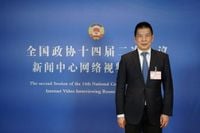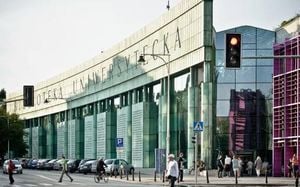Hong Kong's cultural scene is a vibrant tapestry woven from both local and international influences, evolving continuously over the decades. Once heralded as the golden era of cultural expression in the 1980s and 1990s, Hong Kong's creative landscape today boasts a rich variety of artistic endeavors that continue to capture global attention. From art toys popular in over 80 countries to animation films and acclaimed cartoonists, the city is a melting pot of creativity and innovation.
This May, the Hong Kong Pavilion at the China (Shenzhen) International Cultural Industries Fair will showcase the unique charm of Hong Kong's cultural scene under the theme "Hong Kong Style." Organized by the Hong Kong Special Administrative Region Government's Create Hong Kong, the pavilion aims to highlight the depth and diversity of the local cultural and creative industries.
Curator Danny Yiu, who has over six decades of experience across various creative fields, emphasizes the distinction between cultural scene and popular culture. He notes, "Cultural scene and popular culture are actually two different things. While both are deeply rooted in social context and continuously evolving, cultural scene influences an era, whereas popular culture is a momentary fashion." This perspective sheds light on the historical significance of Hong Kong's cultural contributions, which began to flourish in the late 1960s.
During this transformative period, British bands like The Beatles and The Rolling Stones opened up new vistas for Hong Kong's youth, igniting a cultural awakening that led to the blending of Western and Chinese influences in local creations. Yiu recalls that in the 1970s and 1980s, Hong Kong and Tokyo were regarded as the most stylish cities in Asia, with many other cities imitating Hong Kong's trendsetting styles.
However, today's cultural landscape faces challenges, including limited resources and a shifting focus towards new forms of tourism. The rise of 'special forces' and 'depth tourism' among mainland visitors reflects a changing attitude towards travel, where efficiency and cultural immersion take precedence over traditional sightseeing.
'Special forces' tourism is characterized by tourists visiting as many attractions as possible in the shortest time, often with a focus on cost-effectiveness. This trend resonates with mainland youth's desire for quick, impactful experiences. In contrast, 'depth tourism' emphasizes a more profound engagement with Hong Kong's unique culture, encouraging visitors to explore historical sites, enjoy local cuisine, and participate in cultural activities. This shift signifies a growing interest in understanding the cultural fabric of Hong Kong, moving beyond mere shopping and sightseeing.
As a result, Hong Kong's tourism industry is adapting to these new travel patterns by offering products and experiences that cater to the interests of mainland youth. Travel agencies are introducing 'Hong Kong Depth Tour' routes, guiding tourists through the city's historical landmarks, cultural centers, and distinctive neighborhoods. Museums and art galleries are also enhancing their offerings with more interactive exhibitions aimed at attracting younger audiences.
In addition to the cultural exchanges facilitated by tourism, the Hong Kong Pavilion will be divided into four exhibition zones, each showcasing different facets of the city's creative industries. The first zone will feature art toys by local artists Kenny Wong, Pucky, and Kasing Lung, creating an immersive dining experience that highlights popular art toy IPs like Molly, Labubu, and Pucky. This innovative setting marks the first time an art toy-themed tea restaurant has been created, offering visitors a unique way to engage with the art.
The second zone will focus on the rich history of Hong Kong's film and comic industries. A giant LED screen will display clips from eight notable films directed by Yang Fan, including classics like "Bugis Street" and "Last Romance." This exhibition aims to showcase the evolution of Hong Kong's cinematic landscape and its cultural icons.
In the third zone, the intergenerational power of Hong Kong's fashion and jewelry design will be highlighted, featuring brands such as TESS, GOC Studio, Celine Kwan, and Devil Claw Jewellery Design. Each brand brings its unique perspective, combining traditional craftsmanship with modern aesthetics to create distinctive pieces that reflect Hong Kong's cultural identity.
The final zone will spotlight established Hong Kong brands like Chow Tai Fook Jewellery, which is celebrating its 96th anniversary this year. The brand will present a collection of modern jewelry designs inspired by traditional culture, while Thermos will collaborate with comic artists to launch thermos flasks themed around Hong Kong memories.
As Hong Kong continues to navigate the complexities of its cultural landscape, the upcoming fair represents an opportunity to showcase the resilience and creativity of its artists and creators. The pavilion will take place from May 22 to 26, 2025, at the Shenzhen World Exhibition & Convention Center, located in the Guangdong-Hong Kong-Macao Greater Bay Area Cultural Industry Innovation Exhibition. Accessible via Shenzhen Metro Line 20, the event aims to foster cultural exchange and promote Hong Kong's creative industries on an international stage.
This evolving narrative of Hong Kong's cultural scene not only enriches the local community but also strengthens connections with mainland visitors, emphasizing the importance of understanding and appreciating the diverse cultural identities that shape the city. As the world watches, Hong Kong's story continues to unfold, driven by the passion and creativity of its people.




